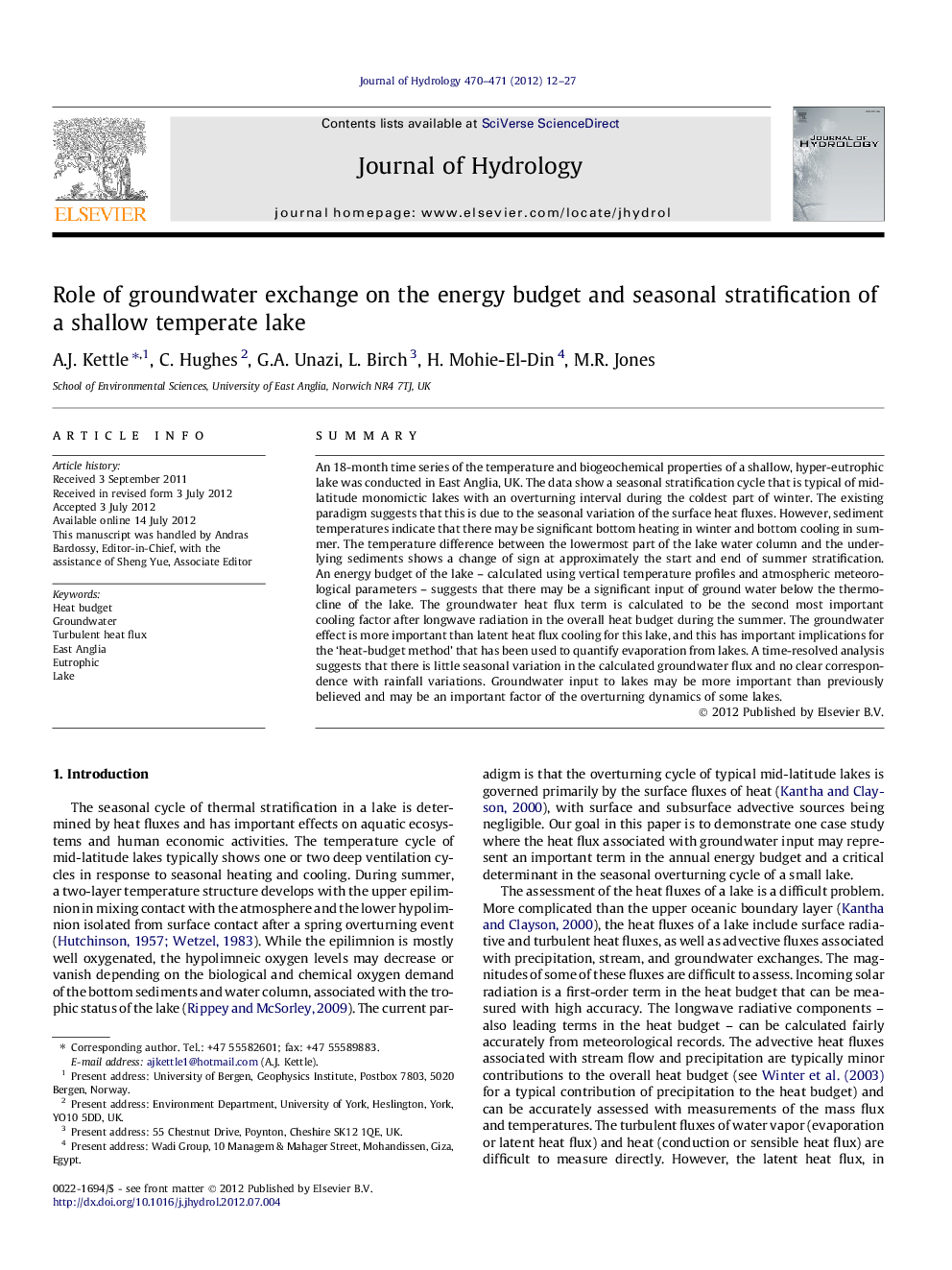| Article ID | Journal | Published Year | Pages | File Type |
|---|---|---|---|---|
| 4576700 | Journal of Hydrology | 2012 | 16 Pages |
SummaryAn 18-month time series of the temperature and biogeochemical properties of a shallow, hyper-eutrophic lake was conducted in East Anglia, UK. The data show a seasonal stratification cycle that is typical of mid-latitude monomictic lakes with an overturning interval during the coldest part of winter. The existing paradigm suggests that this is due to the seasonal variation of the surface heat fluxes. However, sediment temperatures indicate that there may be significant bottom heating in winter and bottom cooling in summer. The temperature difference between the lowermost part of the lake water column and the underlying sediments shows a change of sign at approximately the start and end of summer stratification. An energy budget of the lake – calculated using vertical temperature profiles and atmospheric meteorological parameters – suggests that there may be a significant input of ground water below the thermocline of the lake. The groundwater heat flux term is calculated to be the second most important cooling factor after longwave radiation in the overall heat budget during the summer. The groundwater effect is more important than latent heat flux cooling for this lake, and this has important implications for the ‘heat-budget method’ that has been used to quantify evaporation from lakes. A time-resolved analysis suggests that there is little seasonal variation in the calculated groundwater flux and no clear correspondence with rainfall variations. Groundwater input to lakes may be more important than previously believed and may be an important factor of the overturning dynamics of some lakes.
► We conduct a heat budget of a shallow lake over 18 months. ► The seasonal change of lake temperature is not consistent with surface heat fluxes alone. ► Groundwater causes a cooling of the lake in summer and warming in winter. ► Groundwater volume flow is quantified by imposing heat budget closure on different time scales.
